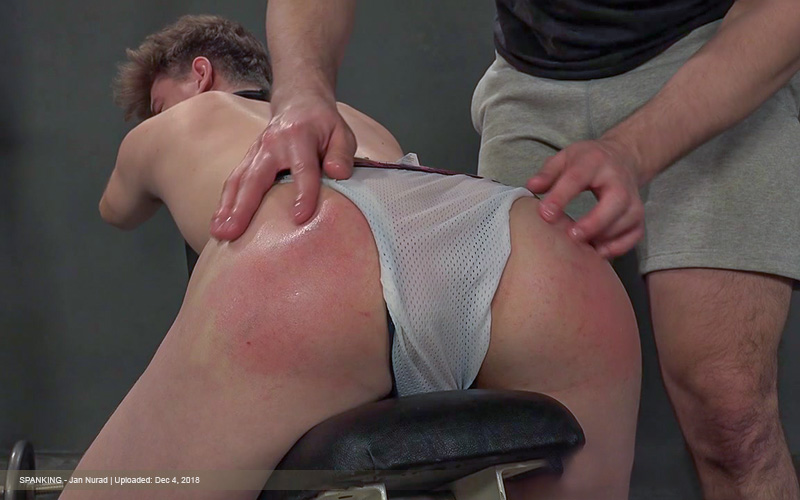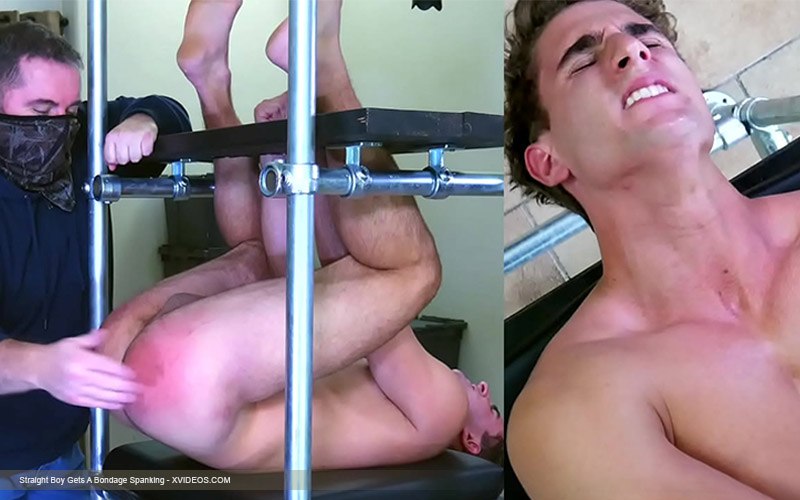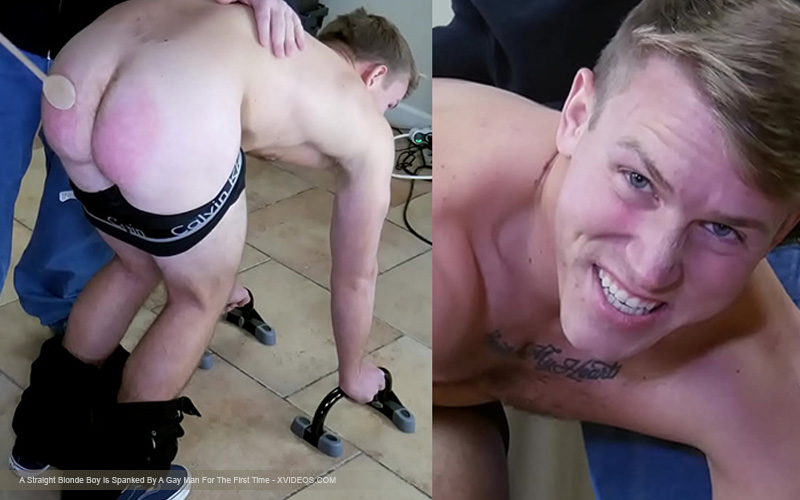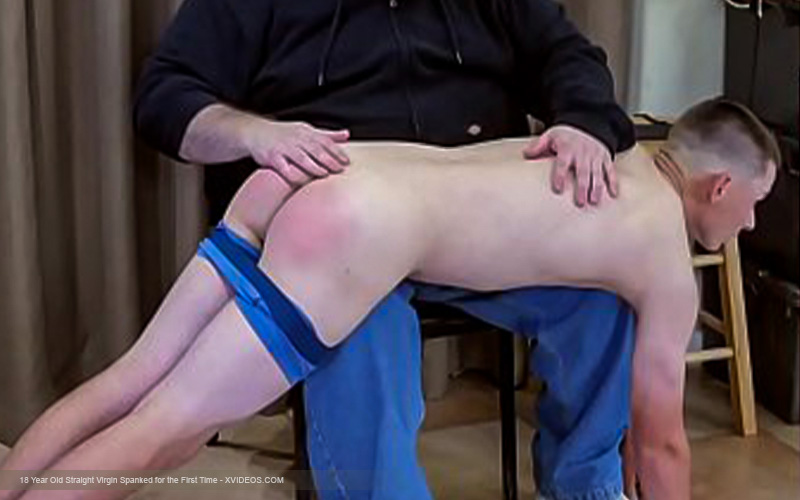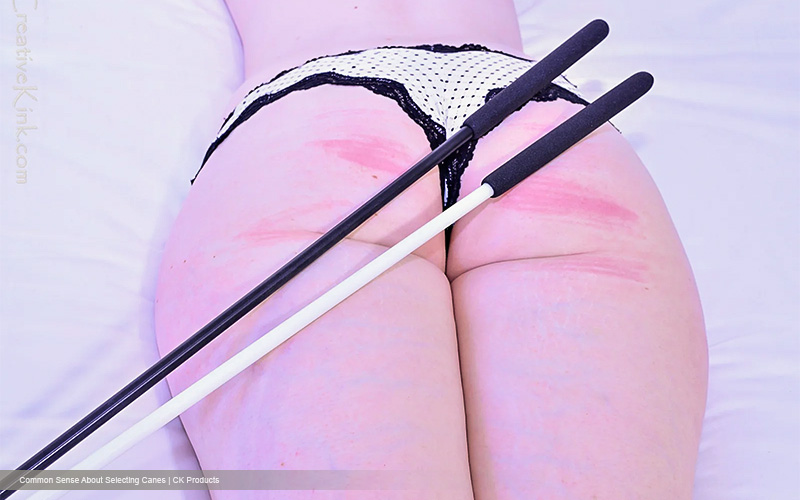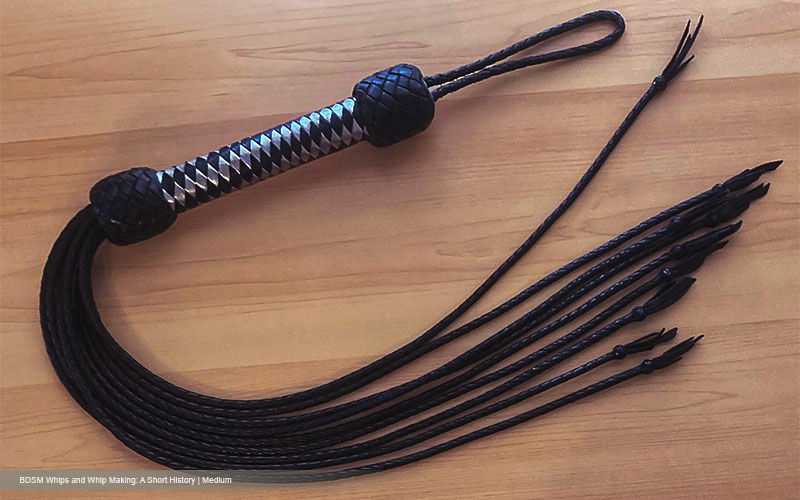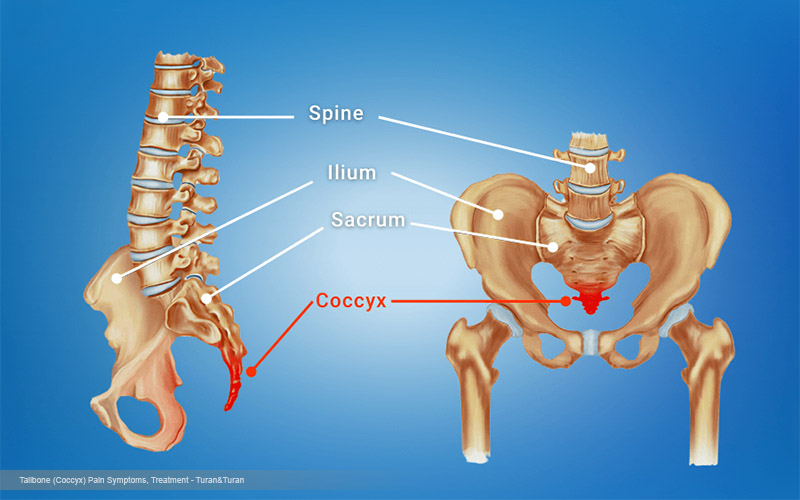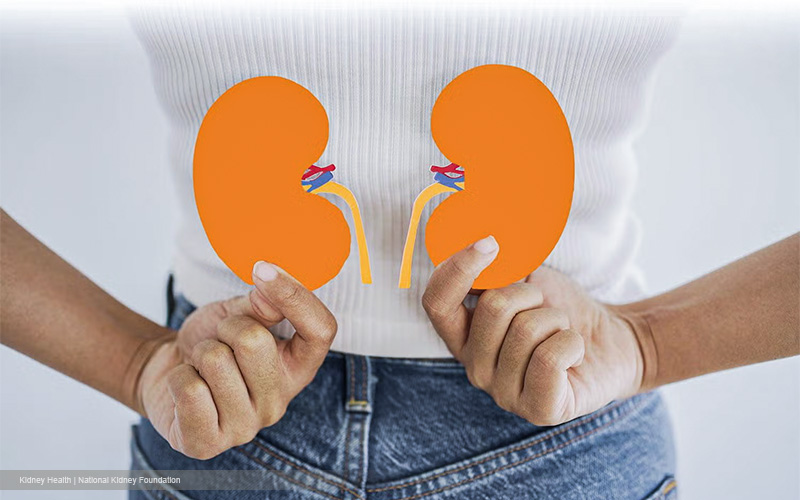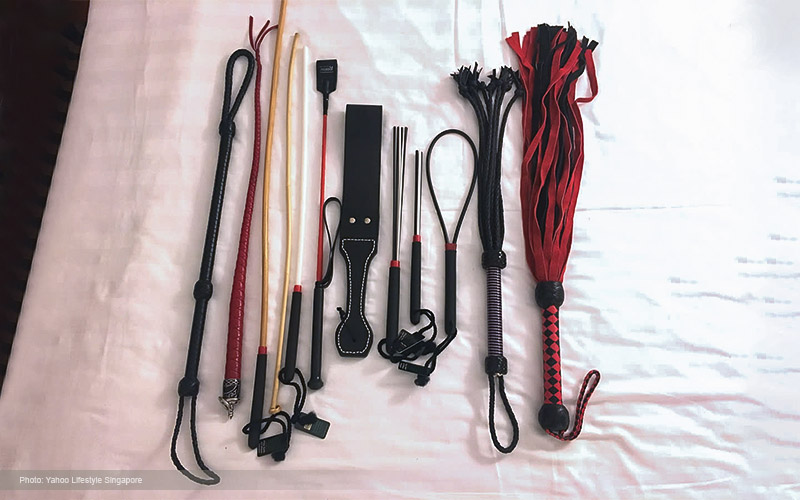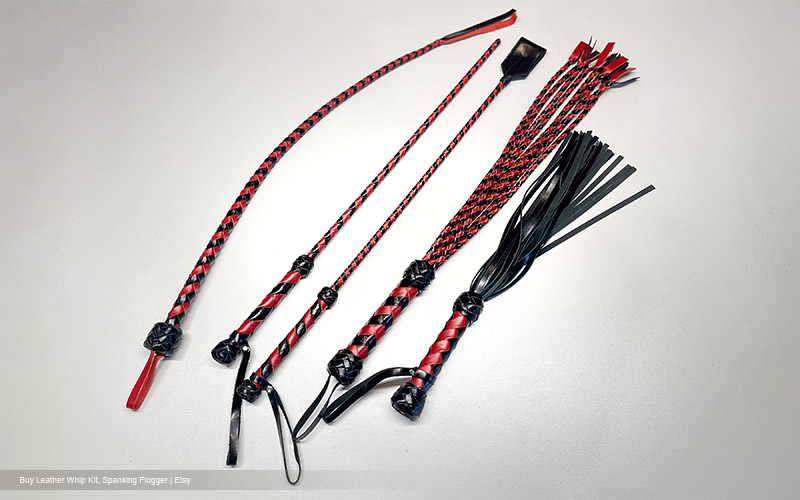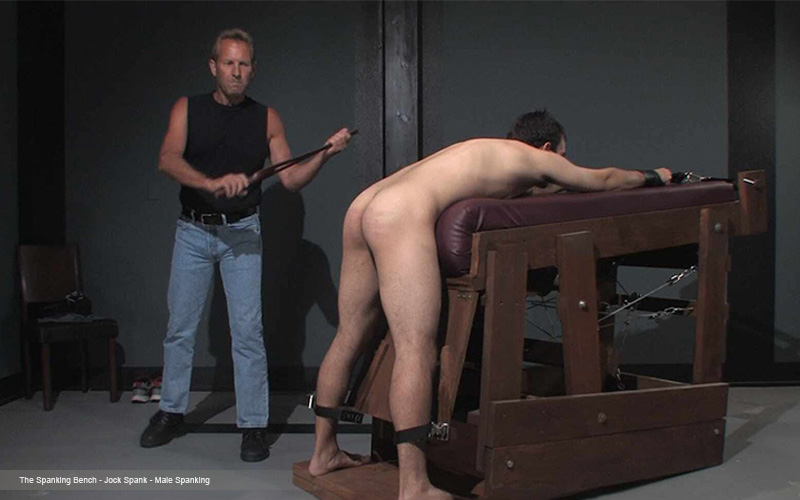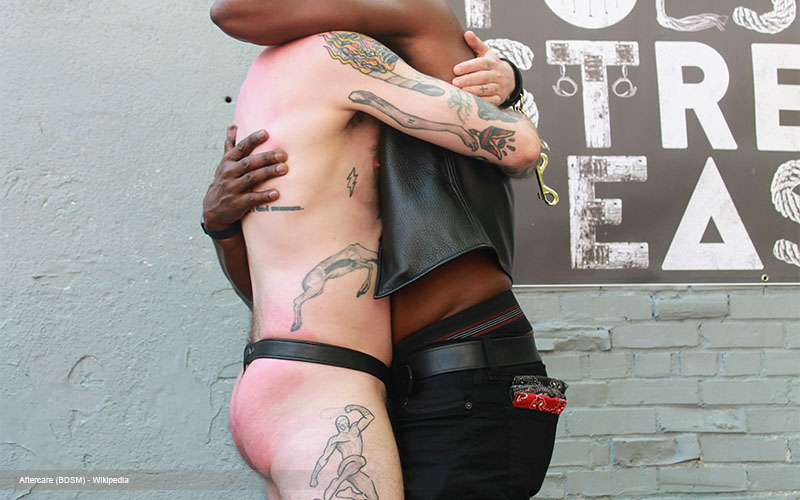BDSM is well known for involving a lot of physical acts. Spanking is one of them. But what exactly makes spanking so appealing? We’re going to look into the history and psychology behind BDSM spanking to find out. We’ll cover some expert tips and techniques for you to try, too!
BDSM spanking is the act of implementing spanking techniques within a BDSM context. Spanking itself is the act of slapping someone, typically on their rear. This is done either by hand or with gear such as paddles or whips. It’s seen as a popular BDSM technique, one used throughout human history. Possibly due to its simplicity, as BDSM gear isn’t required to engage in BDSM spanking. Along with clear power dynamics due to its historical uses for domination.
So, curious to know why BDSM spanking feels good? Or looking for new techniques whilst keeping safety and communication a priority? Read on, or we’ll spank you until you’re sore!
Historical Background
Ancient Depictions And Early Practices
We can find evidence of spanking as early as 500 BC! Depicted in the Etruscan Tomb of the Whipping. A mural inside the tomb shows two men engaging in sexual acts with a woman. One man holding a whip.
It’s likely the spanking might have been ritualistic in this context. However, its inclusion suggests an understanding of how it can also be used for pleasure.
Spanking to enhance pleasure is also supported by its inclusion in the Indian “Kama Sutra” (400 BC). Along with the Arabic “The Perfumed Garden” (1400 AD). Both are seen as forms of early sex manuals.
BDSM spanking was something that many societies found arousing. It is sufficient for it to be depicted and chronicled multiple times throughout history.
The 19th And 20th Centuries: The Rise Of Spanking Literature
As literature became more accessible to the masses in the 19th century. So did erotic literature, particularly in France and the UK. Books such as “The Nunnery Tales” would feature spanking amongst other erotic acts. Likewise, the introduction of photography led to the start of spanking photography. Arguably, early pornography.
As the 20th century came around, it was considered the “golden age” of spanking literature. Mostly thanks to the introduction of illustrated books. Along with the availability of less expensive editions of books. Coupled with longer print runs.
France again produced a large amount of spanking literature during this period. Though several French works were translated into other languages. Such as English and German. During the 1960s, several older works were republished, despite heavy enforcement of censorship laws in occupied countries throughout World War II.
The Digital Age: Spanking In The 21st Century
Spanking in a sexual context wasn’t just a trend or cult activity. It’s endured through the centuries. Gaining enough traction to have printed, publicly available literature made. Unsurprisingly, it remains popular throughout the 21st century. After all, if it weren’t, you wouldn’t be reading this!
With the advent of the World Wide Web and the internet came rapid availability and dependency on it. As a result, spanking content is more accessible than ever before.
Dedicated websites, blogs, and forums are a few examples. All of which support multiple media formats. Videos, photos, illustrations, audio, and literature related to BDSM spanking are all easily accessible. One could argue that the 21st century is the new “golden era” of erotic spanking.
This also means that the global interest in BDSM and spanking has increased. On a scale unlike anything seen before. Dedicated communities can be found, even on sites not entirely devoted to BDSM spanking.
We can observe an interesting emergence of something that has not been particularly chronicled. Resources to help individuals explore BDSM spanking practices. Whether it's gear recommendations or safety measures, there’s a lot more thought put into the morals and psychology behind them than ever before.
Psychology, Motivation, And Emotional Needs Of Spanking
Psychological Motivations And Sexual Gratification
Two people who share an interest in BDSM spanking may not enjoy it for the same reasons. This is most evident by the fact that spanking usually involves a dedicated sub and a dom.
Someone can enjoy both being spanked and spanking others. But typically, a sub and a dom have different needs from each other. The act of spanking itself isn’t necessarily what appeals to them.
By being in such a vulnerable position, there is an element of humiliation to BDSM spanking. It’s clear to anyone watching that the dom has power in this situation.
Spanking has had a historic context of being a form of punishment. This association, therefore, is unconsciously linked to how the sub is viewed. They’re treated like they have no autonomy at that moment.
On the other hand, the dom commands respect through spanking. Those who would utilise spanking as a punishment were authority figures. Therefore, the dom invokes connotations of being in control.
Some find their pleasure comes from embracing power dynamics. But others may find the act of inflicting or receiving pain is their source. Also known as Sadism (inflicting pain) and Masochism (receiving pain). These are the S and M of BDSM!
Emotional Fulfillment And Psychological Release
Subs may seek BDSM spanking as a form of emotional release. For example, they may want to relieve tension or simply let go of control. Not having to think about what they need to do. Being guided by their dom.
As for doms, usually psychological gratification factors into trying BDSM spanking. Particularly being able to exercise control and power. Outside of a consensual BDSM session, it’s near impossible to indulge in this ethically.
However, we’re not implying that these are the only reasons. The human psyche is complicated. Each person has different fixations and needs. Spanking may just be a means to explore a specific element.
Some individuals enjoy BDSM spanking due to feelings of trust and emotional intimacy. At first glance, it may not make sense. Yet spanking is typically done by exposing a sub’s rear. Something a sub may only be comfortable doing with someone they’re close to, such as a partner.
Role-Play And Fantasy
Like many other BDSM adjacent acts, role-playing and fantasy elements are often implemented. The simplicity of BDSM spanking also provides ample room for creative usage. Although these will typically still focus on a form of sub/dom dynamic.
Some individuals find it easier to work with certain narratives for their session. For example, teacher-student or boss-employee dynamics. They may struggle to actually enjoy BDSM spanking if there’s no build-up. Or struggle to engage fully without getting into character.
Some find they can only enjoy spanking if role-playing and fantasies are involved, as it helps them to feel a deeper level of emotional fulfilment. For example, furries may gravitate towards settings involving anthropomorphic animals. Or someone may use role-play to explore gender identity.
Use of roleplay and fantasy can also be used as a vessel for toying with power dynamics. For example, a scenario where a scientist spanks a test subject. Only for the test subject to later turn into a dragon. Spanking the scientist as revenge for humiliating them.
Deeper Psychological Effects
Spanking dynamics can provide psychological validation and self-worth. The reasoning behind this is usually tied to an individual’s life experiences, which impact what feelings they associate with the act of spanking. Each person’s brain processes stimuli and memories differently. This is also why we gain certain fetishes or kinks.
Some may not even have a specific reason for wanting to try BDSM spanking. They may simply be into BDSM in general due to the relationship between a sub and a dom. Craving deep emotional connections, BDSM opens up through exposing oneself in such an intense way.
The focus on personal boundaries, trust, and vulnerability in BDSM play may appeal to some. They may use BDSM play to build up confidence with their sexuality. Some may actually find aftercare to be the most appealing part of BDSM!
Practical Techniques And Tools
Hand Spanking: The Beginner’s Tool
It’s no surprise that hand spanking is the most common starting technique. It’s both cost-effective and requires no prep or maintenance. Hands are a great tool for beginners. But that doesn’t mean it’s not a good option for those with more experience!
It also has the benefit of being the “stereotype” when people think of spanking. Some people find that aspect adds more appeal. Others may prefer it due to the more intimate nature of skin-on-skin contact.
Despite its simplicity as a tool, using hands actually allows for several options. Done through different positions, such as flat, cupped, or backhanded. Or simply differing in the amount of force used.
Belts And Floggers: Moving To Stronger Tools
Belts and floggers are a great recommendation for those who still want a cheap option. But also want to try experimenting with more tools. Belts are easily obtainable, and likely something already owned. Floggers may not be as readily available, but they are still relatively inexpensive.
It’s usually recommended to try these as the first step above using your hands. They provide a more intense spanking experience that hands alone can’t provide. This is assisted by the flexibility of these tools.
They allow for much more precise impacts. Which also has the added benefit of increasing the intensity of the impact. In turn, this amplifies the sensation of pain inflicted in a smaller area.
This works well for rapid, repetitive spanking. You can also adjust the impact by using differing levels of leather thickness. Make sure you don’t hit someone with the belt buckle!
Wooden Paddles And Brushes
For those who have more experience with spanking. Wooden paddles and hair brushes provide a deeper, more intense impact than belts and floggers can provide.
Wooden paddles allow for a larger area of impact, without having to deal with a reduction of force. Hair brushes, on the other hand, have a smaller area and typically weigh less. Yet they compensate by having the option of using either the bristles or the flat backing.
We would recommend that beginners start with either a hair brush or a smaller, lighter paddle. It’s important that you understand your own strength. Heavier paddles can lead to heavy bruising or internal bleeding if used incorrectly.
Make sure to keep an eye out for any signs of wear! Avoid using tools with splinters or early signs of cracking.
Canes And Whips
These are options we’d only recommend if you’ve had extended experience with the rest of the tools on this list.
These can be seen as more intense versions of belts and floggers. Providing swift, intense spanks in small areas. However, excess force is not recommended. There’s a high risk of causing deep cuts, bleeding, and damage to internal organs.
To avoid any unintentional injury when using a whip, always hold it at the handle. You should ensure your grip is secure, yet slightly relaxed. Just the right balance to avoid dropping the whip whilst swinging. But enough to prevent all the force from going directly to the tip.
Try to localise movements to just your wrist. Avoid using your whole arm to swing, as this adds excessive force. Start with small, slow movements. You should always practice before trying it in a session!
As for canes, the same advice about holding them from the handle applies. The risk of accidental injury is slightly lower compared to whips, due to canes having less flexibility. However, you should still avoid applying force through your whole arm.
For both, you should also be aware of “high-risk” areas of a sub’s body. We’ll cover more on this later. It’s worth sticking to areas that are “safe”, such as the buttocks or thighs, especially if you’re trying these tools for the first time.
Self-Spanking
For those occasions when your partner is unavailable. Or if you’re simply craving the sensation of being whipped whilst having some time alone. Self-spanking is a viable option.
You should still be cautious to avoid accidental self-inflicted harm. Applying proper technique is still just as important as it would be in a normal session! Say you injure yourself whilst alone. You won’t have anyone immediately around to attend to your wounds!
Your choice in tools may be limited. However, this allows you to experiment with smaller, unconventional, and handheld tools. For example, spatulas or towels.
Safety And Precautions
Common Injuries And How To Avoid Them
As mentioned earlier, there are some “high-risk” areas of the body to be aware of. Never spank near these areas if you’re inexperienced with BDSM spanking!
Tailbone (Coccyx) Area
Located around the base of the spine. Near the top of the buttocks. This is a sensitive area of the body, with little fat or muscle to protect the nerves and bone.
Avoid accidentally striking this area by focusing on the thighs. Or the lower sections of the buttocks. Injury to the coccyx can cause weeks of severe discomfort when walking and sitting!
Kidneys
Many would assume that internal organs wouldn’t be damaged from spanking. However, the kidneys are located surprisingly close to your lower back, just below the rib cage and above the hips. Unlike many other important organs in the torso, they’re not sheltered by the rib cage.
Due to their position near the spine, this also means there is less fat and muscular tissue to protect them. Avoid striking around the sides of the lower back. You risk causing internal bleeding. Blood in urination, or urine leaking from the kidneys internally!
Nerves
Any area with little fat and muscle tissue should be considered “high risk”. For example, joints, hands, feet, the neck, and the head. When in doubt, stick to the buttocks.
Avoid striking these areas repeatedly or with excessive force. This can cause severe nerve damage. You risk the chance of permanent paralysis or the need for amputation if you hit a nerve directly!
Tools And Their Impact
A paddle does not impact in the same way that a cane or belt would. Ensure you understand how each tool works within your capabilities before using it on another person, even if it is the same tool made of different materials.
You need to understand the differences between applying blunt-force pain (paddles) and other methods, as opposed to applying sharp pain (whips and canes). Blunt-force pain is more likely to cause bruising. Sharp pain, cuts, scratches, and bleeding. Techniques that work well for one type of tool won’t work well for all of them!
Suppose you’re new to spanking, or just gauging your partner’s tolerance. Always start with lighter implements and beginner-friendly tools.
General Safety Guidance
- Always aim for soft, fatty tissue. Avoid bones or sensitive areas.
- Know your partner’s limits! Allow for communication before, during, and after your session. If they want to stop, you stop.
- Always warm up with smaller impacts before engaging in long or intense sessions. Allow for breaks as needed.
- Aftercare is vital, no matter the session’s intensity. Remember to make sure everyone rehydrates. Have soothing lotions, cold compresses, and first aid kits available, along with emotional check-ins.
Communication And Boundaries
Pre-scene Negotiation: Setting Boundaries
You must always discuss your BDSM spanking session with your partners in advance. This allows you to discuss your boundaries, desires, and limits. Establishing what everyone wants from the session early on is crucial.
When it comes to boundaries, be specific. People’s physical, emotional, and pain boundaries can vary drastically. You need to have a clear understanding of what is acceptable for a partner, and what isn’t!
Physical means contact that isn’t related to spanking, like kissing. The emotional being is how someone wishes to be treated and spoken to. Whilst pain is related to how much pain someone wants to experience. Or the type of pain they wish to experience.
This is also the time you should be deciding on your safe words or signals. An established example is the traffic light system. Green means a dom is good to continue. Yellow means the driver should slow down or use less force. Whilst red means stop immediately.
Remember to be clear about what tools will be used, along with how intense the session will be. Clear communication is important for avoiding any misconceptions, along with avoiding any unexpected injuries.
In-the-moment Communication: Checking In During The Scene
You should have established what forms of safety communication you’re going to use. But for a form of communication that feels more “natural” mid-session, try simple questions. For example, “Does that feel good?”. It can easily blend in as pillow talk!
This is even more effective when paired with a numerical system. A scale from 1-5 to rate intensity. 1 being least, 5 being most. Try asking what number your partner thinks you’re on. If it’s a lower number, that opens the opportunity to offer an increase in intensity.
Over time, you’ll come to recognise physical cues and read body language. This is especially important for sessions with inexperienced partners. Suppose you can see signs of struggling. Even if you’re told they’re fine, don’t be afraid to change your intensity.
You can always increase your intensity again if you lower it too much. Flexibility is a vital asset! Remember, you’re adjusting to your sub’s needs and comfort levels, not yours.
Aftercare: The Emotional Aftermath
You should always be using aftercare techniques. Especially given how intense BDSM spanking can be. You should ensure everyone’s physical and emotional well-being is cared for.
Physical aftercare involves tending to any injuries or lasting pain. It’s always recommended that you have medical supplies. For example, soothing creams for sore skin and cooling compresses for bruises. Massages are also recommended to help relax sore muscles.
Emotional aftercare is the sort of aftercare seen after most BDSM sessions. It involves providing reassurance and reconnecting emotionally. Basically, allowing your sub to remain grounded and allow them to return to reality.
It also allows you both to discuss the scene, which is vital for establishing what to improve for next time. Or to discuss if you’re both ready to introduce new tools or techniques. This is also important for finding out if your sub even wants a future session.
Aftercare is vital for reinforcing trust, healing, and maintaining intimacy. Without it, you’re less likely to have partners return for future sessions. You’re less likely to learn from your mistakes if your sub doesn’t get a chance to give you feedback!
Conclusion
Remember that there’s more to spanking than just the act itself. The physical, psychological, and emotional aspects of BDSM spanking are all equally important. It’s your responsibility to research each of them. So you can fully understand how to practice BDSM spanking safely!
BDSM spanking isn’t a free pass for unchecked sadism and abuse. Understanding, respect, and communication are mandatory. Subs are people. Do not force your desires upon someone, especially if it crosses their personal boundaries.
Safety and aftercare allow for a positive and fulfilling BDSM spanking experience. Sometimes more so than the spanking itself. BDSM spanking isn’t just for attaining new heights of pleasure. It enhances intimacy, trust, and self-discovery for both partners, far beyond the constraints of typical sexual dynamics.
Got some tips and techniques of your own to share? Let us know in the comments! Why not get some BDSM gear for your next session with a new harness? Happy spanking!

